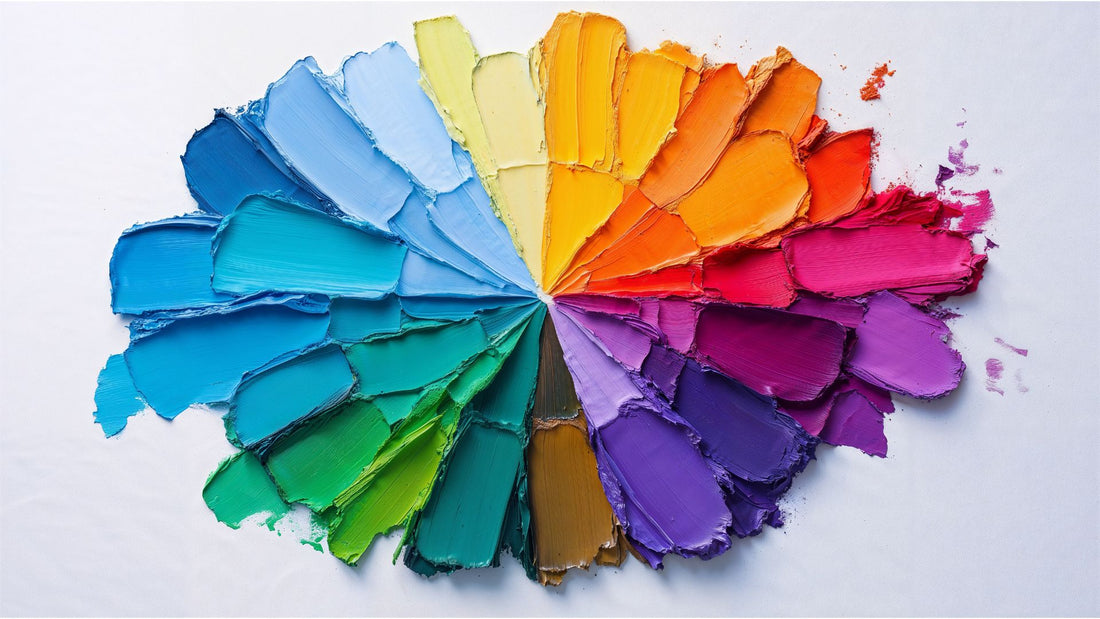
How to Use Color Psychology in Your Wall Art Choices
Color is more than just a visual element; it's a powerful tool that can profoundly influence our emotions and perceptions. Understanding color psychology can help you create a home that not only looks beautiful but also feels harmonious and supports your well-being. When it comes to choosing wall art, color is a crucial factor that can dramatically impact the mood of a room.
The Meaning Behind Colors
Each color carries its own set of associations and psychological effects. Here's a breakdown of some popular colors and their meanings in the context of interior design:
- Red: Red is a stimulating color that evokes passion, energy, and excitement. It can be a great choice for social areas like dining rooms or living rooms, but use it sparingly as too much red can be overwhelming. In small doses, red can promote productivity.
- Orange: Orange is a warm and inviting color associated with enthusiasm, creativity, and optimism. It works well in kitchens, creative spaces, and areas where you want to foster social interaction.
- Yellow: Yellow is the color of happiness, sunshine, and optimism. It can brighten up a room and create a cheerful atmosphere. However, too much bright yellow can be overstimulating, so consider using softer shades or incorporating it as an accent color.
- Green: Green is a calming and refreshing color that represents nature, growth, and balance. It's an excellent choice for bedrooms, bathrooms, and any space where you want to create a sense of tranquility and restoration.
- Blue: Blue is a serene and calming color often associated with peace, stability, and trust. It's a popular choice for bedrooms and bathrooms, as it can promote relaxation and restful sleep. Blue can also be used in offices to create a calm and focused environment.
- Purple: Purple combines the stability of blue and the energy of red, often associated with luxury, creativity, and spirituality. It can add a touch of sophistication to a room and is a good choice for creative studios or meditation spaces.
- Pink: Associated with love, playfulness and feminity. Pink hues can add a touch of warmth to any room. Pink is also associated with approachability.
- Brown: Brown is a grounding and earthy color that evokes a sense of stability and comfort. When used correctly, brown hues can promote warmth.
- Black: Black is a powerful and elegant color that can add drama and sophistication to a space. Use it sparingly as an accent color or in minimalist designs to create a sense of depth and contrast.
- White: White represents purity, cleanliness, and simplicity. It can make a room feel larger and brighter, making it an excellent choice for small spaces or rooms with limited natural light.
Choosing Wall Art Based on Color Psychology
Now that you understand the basics of color psychology, how do you apply it to your wall art choices? Here are some tips:
-
Consider the Room's Purpose: What is the primary function of the room? A bedroom should promote relaxation, while a home office should encourage focus and productivity. Choose colors that align with the desired mood and energy of the space.
-
Identify Your Desired Mood: How do you want to feel in the room? Do you want to create a calm and serene atmosphere, or a vibrant and energetic one? Select colors that evoke the emotions you want to experience.
-
Think About Your Existing Decor: Your wall art should complement your existing furniture, wall colors, and accessories. Choose colors that harmonize with your overall color scheme, or use contrasting colors to create a focal point. For example, if you have a lot of neutral tones in your room, consider choosing a piece of art with bolder colors.
-
Don't Be Afraid to Mix and Match: While understanding color theory is helpful, don't be afraid to experiment with different color combinations. Sometimes, unexpected pairings can create a unique and visually appealing effect. For example, you might choose a piece of art with both warm and cool colors.
-
Trust Your Instincts: Ultimately, the best way to choose wall art is to trust your intuition. Select pieces that resonate with you on a personal level and that you find visually appealing.
Conclusion
Color is a powerful tool that can transform your home and influence your mood. By understanding the principles of color psychology and applying them to your wall art choices, you can create spaces that are not only aesthetically pleasing but also emotionally supportive. So, take some time to consider the colors that speak to you and choose art that helps you create the home of your dreams. Use these tips to find art that creates a home that is perfect for you.
